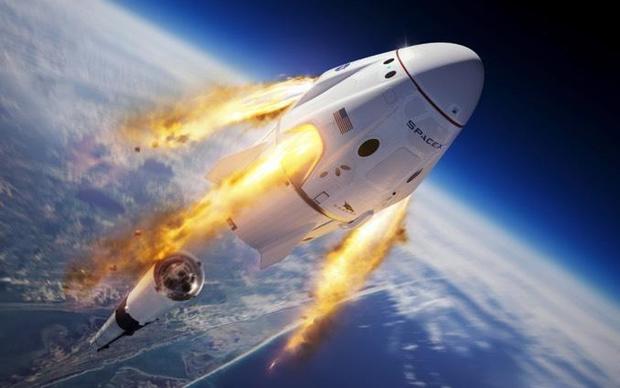Keeping tabs on the weather, SpaceX engineers reset for a second attempt to launch a Falcon 9 rocket on a test flight Sunday to prove the company’s Crew Dragon astronaut capsule can safely propel a crew to safety during a catastrophic booster malfunction.
To make the test as realistic as possible, the thrice-flown Falcon 9 is programmed to shut down its nine first stage engines 84 seconds after liftoff during the most aerodynamically stressful region of flight — a worst-case scenario for the Crew Dragon’s emergency abort system.
The powerless booster is expected to be ripped apart as it tumbles in the supersonic airstream, its propellants possibly igniting in a high-altitude conflagration.
The capsule, however, was designed to safely boost a crew to safety at any point in flight from the launch pad until orbit. Engineers are confident the spacecraft’s eight powerful Super Draco engines will work as advertised, accelerating the craft from zero to more than 430 mph in just a few seconds.
Trending News
Following a ballistic trajectory, the Crew Dragon is expected to reach an altitude of about 26 miles before arcing over for a descent back into the lower atmosphere, ending with a parachute-assisted splashdown in the Atlantic Ocean 20 miles northeast of Cape Canaveral.
SpaceX and NASA originally planned to launch the in-flight abort test, or IFAT, on Saturday, but high winds and rough seas in the Crew Dragon recovery zone prompted a 24-hour delay. The forecast for Sunday called for much better conditions at sea, but high-altitude clouds from an approaching cold front threaten a 50% chance for another delay.
The in-flight abort test is the last major technical hurdle before SpaceX launches two veteran NASA astronauts — Doug Hurley and Bob Behnken — on a flight to the International Space Station. That flight will be the first launch of U.S. astronauts from American soil since the space shuttle’s final mission in 2011.
If the test goes well, the long-awaited piloted test flight with Hurley and Behnken, known as Demo-2, could come as early as March.
“The vehicle will be all ready at the end of February,” Kathy Lueders, manager of NASA’s Commercial Crew Program, told reporters Friday. “We’re kind of shooting for early March right now, from a planning perspective. That would be the earliest.”


